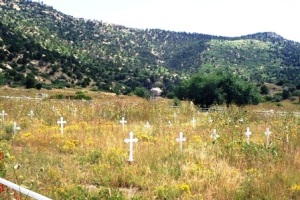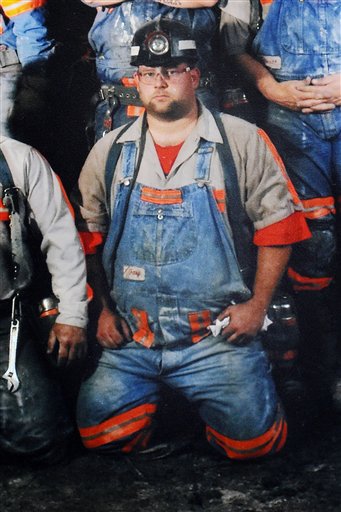
One of America’s evergreen beliefs is that a college education is your pathway to financial success. Needless to say, this notion should properly be examined on a case-by-case basis. Certainly, if you have a degree in engineering you are more likely to be doing better than if you have a liberal arts degree in medieval history. My apologies to those professional medieval historians who might be reading this, but facts are facts.
Talk of a financial quid pro quo, where tuition money is exchanged for cold hard cash in the real world, makes the academics uncomfortable, but it doesn’t stop the people in the college admissions office quietly saying that under their breath. Is this notion of four years worth of college education now really worth it?
My Checkered Academic Career
I should say at the outset that I am the proud holder of a liberal arts degree in psychology. Have I used it directly since my college attendance? No. Did attending college change my life? Yes.
As an aging Baby Boomer, college was pretty much the only choice for any number of reasons. If you were a male in the United States in that era, college was a way to defer going involuntarily to Southeast Asia as a poorly paid employee of the United States military. Being a Southerner, there was an implicit conflict with that attitude, since serving your country is the right and proper thing. Obviously, not everybody felt that way and the colleges were overflowing during that era. All that was necessary was money and the required II-S deferment (please see a 1963 Harvard Crimson how-to article on the subject). Places like the late Parsons College supposedly flourished as a result of the draft. When the military draft went away, a number of colleges coincidentally went away too.
Draft dodging aside, I was already on greased rails toward college. Both my parents had college degrees earned in the 1930’s, when a college degree was the exception rather than the rule. Likewise I had (to quote from an earlier blog): “Much of my primary and high school career was spent cosseted in the ivied halls of college preparatory schools.” In short, I was going to attend college, whether I liked it or not. As it turns out, I liked college very much, although for reasons other than academic ones.
Like so much else in my life, my path was not a steady and direct one. I managed to flunk out after two years, go to another college for one year to redeem myself and then returned to graduate from the college where I had originally started at. The basic lesson of college for me was that failure is not permanent. I periodically revisit that lesson from time to time. It’s liberating, knowing that you can learn from failure.
I also tempered my college education with real world experiences with summer employments. There’s nothing like working on a railroad, or in a coal mine or driving a garbage truck to get a handle on the world and its ways. The big difference was that with summer employment, I learned while I earned. They paid me instead of me paying them.
What Things Cost
From those dusty old days in the late 1960’s, it is obvious that some things have changed along the way. The president of my little college was fond of describing his institution as costing the same as a Chevrolet Malibu. Not a Cadillac nor a Volkswagen either, a nice middle-of-the-road kind of college. It’s interesting to look back at things from that perspective.
In my final year of college, 1971, the tuition, room & board was around $3,900.00, which was about what the Chevy cost. Using the Bureau of Labor Statistics inflation calculator, that $3,900 of 1971 now buys $22,184.64 worth of goods and services. My college, on the other hand, now costs $44,424.00 for tuition, room and board; $36,138 is for tuition alone. At the same time, a basic 2013 Chevrolet LS in a choice of eight colors lists for $23,150.00; tag, tax and dealer prep not included. The deluxe 2LTZ costs a bit under $31,000., and you can always add extra features, including a head block heater. In other words, college costs have risen faster than inflation, and far beyond the notion of costing the equivalent of a Chevy. It makes you wonder what happened along the way. And this issue is not confined to only my school, it is nationwide.
Nothing is Permanent
My college graduating class numbered about 270 (having started off four years earlier at over 400), with the total college population at that time being around 1,500. By the early 1990’s, the college’s population had drifted down toward 1,000, and there were legitimate concerns about the college’s future. Nor was this without precedent. Not far away in the same town, another college had closed in 1930, serving as a reminder that colleges can go away.
During that period of the early 1990’s, I had an interesting back-channel email relationship with the then-president of the school, so I got to see things up close and personal. This individual had been brought in to shake things up, and was making progress. The college eventually snapped out of its funk and things have grown back up to over 1,400 students. But only as a result of the school’s looking inward and questioning what the purpose of a college education was and how this particular school could do it effectively. The school was able to make a compelling case for its survival at that time.
This was not done easily, since there was considerable foot dragging by the faculty. Their feeling was that things were fine just as they were and, as seems to be common in academia, people had gathered together into circles of self-preserving camps. It’s interesting that people who seriously believe in the process of evolution are often unwilling to acknowledge that the failure of an institution might actually be part of an evolutionary process. Only the fittest survive; unless you’re employed by it.
In any case, committees were formed, studies were commissioned. One of the discoveries made was that much of what constitutes “the college experience” actually was happening in the dormitories rather than the classrooms. Having the dorms nearby and connected to the classrooms as the “college experience” was handy. They even gave this notion a name: “residentiality“.
That concept may still hold up and I have no doubt that my college is graduating people who have benefited from the experience, but you wonder if this process might be better achieved in a hotel in downtown Chicago. It always seems that the dynamic of problems & solutions occurs within the limits of the day and the notion of residentiality served as a useful construct for the school. Those who worked so hard at that time to steer the college toward the future were doing so while limited by the span of their available experience.
The Competition
Consider that in the early 1990’s, the Internet was merely a flickering idea and that a T1 line was pretty hot stuff. Online institutions such as the University of Phoenix were on the horizon, too. But the information age as we now know it was a distant reality. Now, the University of Phoenix has been joined by any number of other online universities that offer remote learning for those who want a college degree.
There remains one nagging little question. If everyone has a college degree, then what is required to excel in our society? In my home town of Atlanta, there are a number of “Universities”, ranging from the massive campus of Emory University right down to DeVry University. You can’t go five miles without running into some sort of University. The same holds true for “colleges”, too.
Yes, I recognize that Emory and DeVry are not the same type of institution, but, in the larger sense, what constitutes a “college” degree has been diluted. One of the beliefs has been that if you have a college degree, then you’re guaranteed financial success and gold card status in the middle class. If everybody has a college degree, then you need something more to distinguish yourself from the crowd. In that environment, you have to wonder if a college education is worth the costs.
Clouds on the Horizon
What is becoming apparent is that college costs have risen at a rate far faster than that of ordinary inflation. And you have to wonder why. As a believer in free markets, I assumed that this would eventually happen since costs of goods & services tend to creep up until the market starts to react. The successful institutions adapt; those that don’t go away.
The market is beginning to act, no matter what the academics and education bureaucraticians might think. Of course, there has been push back, but short of direct intervention by Government or God, people are going to do what they’re going to do. And right now, it is to question the value of a college education.
As a free-market kind of guy, I believe that a free market will find its own level, and things certainly have changed in the marketplace. Consider these words from “How to burst the college bubble: Stop pretending your alma mater matters“:
- In the schools-don’t-matter world, the bygone facts of the 2012 education bubble—insanely expensive colleges, skyrocketing student debt and widespread joblessness—would sound to you like the Dutch tulip bubble. Huh? Why did people hijack their lives for tulips—or college?
Consider a headline in the 10/09/2012 number of the Atlanta Journal Constitution: “Fewer students at state’s colleges” (“Record-setting enrollment is over”; “Some schools may have to drop programs”). In other words, people are starting to figure out that college attendance does not automatically assure anything. This is not to say that enrollment will go back up once the recession is over, but it does point to the results free market operation. As could be expected, there is an interesting variation on outsourcing. Not everybody is questioning the value of a college education; please see here.
How are You Going to Keep them Down on the Farm?
Likewise, there are related implications to the glut of college graduates. Institutions worldwide have been cranking out well-educated individuals for whom there is no equivalent career after graduation. It’s not just the United States, places like Egypt and Europe have thousands of college educated people sitting around coffee shops with little if anything to do. It’s a recipe for revolution.
Of course, sitting around with nothing to do also serves to breed resentment. In this case, some of it is resentment toward a system which made it easy to go to college in the first place, clearly an unintended consequence. The student loan issue is bubbling away on the back burner. Consider this New York Times article. On the other hand, you might want to put things into perspective with this Forbes article.
Payment Due
It’s interesting that the legislative powers-that-be saw fit to make student loans not dischargeable through bankruptcy. To wit (from the Forbes article): “Thanks to a law passed in 1998 by the same government that is giving out all the student loans, you can’t discharge your federal student loans in bankruptcy.” This was done “under pressure by the student loan industry”, but it is not without logic. You can’t repossess an education. No sending out a repo-man at 3:00 AM to grab the collateral and drag it back to a fenced storage facility. Nope, once you’ve got knowledge, it’s yours to keep.
Nobody stuck a gun to the students’ heads and made them sign, but people have now tuned in to the fact that college is expensive. And that having a college degree is not a guarantee for success in the world. But I don’t believe that things have been all that different for numerous college graduating classes in the last fifty years.
College prepares you for life, but it doesn’t necessarily prepare you for a job. And that hasn’t changed all that much in a century; it’s just that there are more college graduates out there than there used to be. At the same time, there is plenty of anecdotal evidence pointing to the fact that not having a college degree is necessarily bad. Think Bill Gates here, along with numerous others.
Then & Now
In the larger sense, however, the market’s questioning of the value of a college education and its role in our lives is part of a larger process going on in our society. In this age of information, we have access to answers to questions that we didn’t even know of before. Is college simply another information delivery system?
A major part of any college campus is the library, and much of my education forty years ago was devoted to learning how to use both the main library and also the specialized department library. So much of what I learned was buried down deep in texts and abstracts. Now, libraries themselves are looking antiquated. A few key-word searches and you have your answer. And you don’t even have to leave your dorm room. In fact, why have a dorm room in the first place? Which points to another interesting matter.
In the mid-1990’s, my college had faced a problem that was caused by the school’s inability to promote itself to potential students. This was remedied with some improved marketing materials and tidying up the campus. Now the problem which this college and all other institutions of higher learning face is the industry-wide problem of the questioning of the value of their product.
One by-product of the information age is that educational institutions have been equated with all other information sources. And expensive ones at that. If you can get the information online, why bother with college? Of course, the point of an education is to gain judgement, to sort out the wheat from the chaff, to place things into proper perspective, but those notions have been lost in the shuffle.
In short, a college education does have value, but at what cost? The market is searching for value, wondering if the products offered by the education industry will improve their lives and prospects for success. As discomforting as this reality may be to the academic world, the education business has financial aspects, too. And the cost versus benefit calculation often minimizes the benefit side of the ledger because so much of it is intangible, while the costs themselves are quite real.
For me, college had a durable effect upon my life, but in ways that I have only begun to appreciate over time. Being able to write a clear declarative sentence is one thing that college honed in me. And for that, I am thankful, but I also paid good money for improving what was already there.
Assuming that there is a “college bubble” developing, it is also safe to assume that there will be calls from political quarters to “fix” this problem. Perhaps, just this once, we will stand back and let a free market resolve the matter. And we can hope that all those college courses gave unemployed and underemployed students the judgement to recognize demagogy when they see it.
Read Full Post »


















You must be logged in to post a comment.